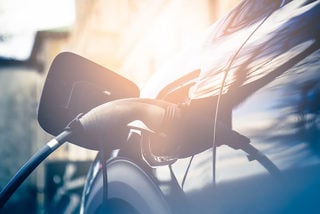By John Hartley, director of product management at Centrica Business Solutions
With almost 30,000 electric vehicles (EVs) registered in the UK so far this year, it’s clear that the number of EVs is climbing and many businesses are already taking steps to introduce them into their fleet.
Furthermore, as environmental targets become more stringent, many will be exploring how more carbon-friendly transport technology can make a difference to their firm and help reduce carbon emissions.
As the cost of going electric continues to fall, more firms are planning to, or already have, started transitioning their fleets. Indeed, our own research suggests that businesses are making inroads towards a greener future, with three quarters of firms telling us they plan to adopt EVs in the next five years.
Many of us will know about the well-publicised benefits of EVs over and above their environmental credentials – they are cheaper to maintain, run and tax and give unrestricted access to low emissions areas, such as the ultra-low emission zone (ULEZ) in central London.
But there is a surprising benefit that firms may not have considered. Electric fleets can do more for a business than lowering costs and reducing carbon emissions, they can actually become a source of revenue. The key to unlocking this? Coupling EV charging points with modern energy technology.
The technology
For firms adopting EVs and installing the necessary charging infrastructure, the use of modern energy technology allows them to meet the additional power demands of new charging points by generating, storing and managing their own power on-site, independently of the grid.
For example, a business could install solar panels and battery storage on its premises, and link these to its EV infrastructure.
Electricity generated through the solar panels would be used to power charging points directly – and any surplus can be stored in the battery.
Stored energy could then be deployed at a later date, for example when the weather is cloudy and the panels aren’t able to generate enough electricity to charge effectively.
In this way, not only can modern energy tech allow a business to meet the additional energy demands of its electrified fleet, but – through use of renewables – can support overall carbon-cutting and lower energy costs.
Revving up revenues
On-site generation and storage can also help firms to unlock new revenue streams – through participation in demand side response (DSR) schemes.
Through DSR, businesses commit to reducing or shifting their energy consumption when demand on the grid threatens to exceed supply – and can access financial incentives provided by the Capacity Market for helping to balance the grid. This could mean switching power source to electricity generated on-site rather than from the grid.
It could also mean providing stored energy, for example in a battery array, to the grid when prompted.
Our latest research, Distributed Energy Future Trends, found that almost a third (30%) of businesses that are already producing energy on their own premises are selling their surplus, generating additional revenue.
In the future it’s likely that businesses will be able to use EVs as batteries themselves, meaning fleet vehicles could actually be used as a firms’ power source – for example when grid pricing is high – or the energy stored in them sold back to the grid for profit.
The right partner
EV fleets provide numerous well understood benefits, but by integrating charging infrastructure with modern energy technology, firms can unlock a whole new level of business advantage, from lower costs and greater control to better environmental performance and even new income streams.
As firms transition towards a greener future, electrified fleets and modern energy technology can work side-by-side to make a business’ operations cleaner and more profitable.




















Login to comment
Comments
No comments have been made yet.